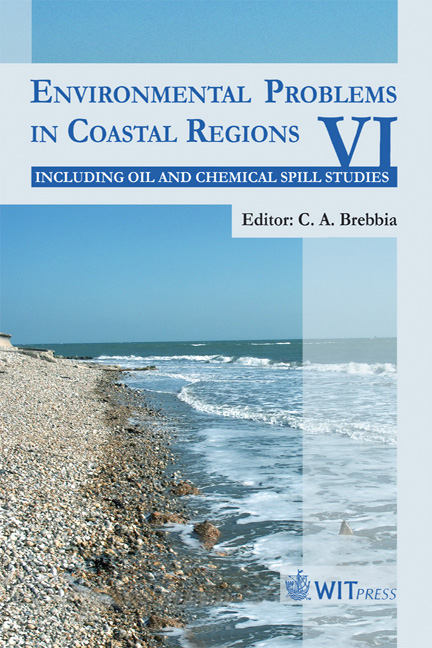The Application Of ESI Maps With The GIS Technique To Coastal Oil-spill Cleanups In Taiwan
Price
Free (open access)
Transaction
Volume
88
Pages
11
Published
2006
Size
597 kb
Paper DOI
10.2495/CENV060041
Copyright
WIT Press
Author(s)
Y.-C. Chen & L.-J. O’Yang
Abstract
Fragile ecosystems and the harnessing of resources for human use are two major elements that have to coexist in coastal regions. The sensitivity of the coastal environment to oil spills and related cleanups depends on the presence of these resources, and can be assessed by the level of potential impact that would be caused by an oil spill. In this study, the Environmental Sensitivity Index (ESI) and maps associated with it (ESI maps) are introduced and will be applied to the Taiwan coastline. The ESI indicators include shoreline classification, biological resources and resources for human use (socio-economic resources). These indicators will represent the extent to which a specific coastal area would be vulnerable to the effects of an oil spill. In other words, these indicators tell us the level of reactions induced as a result of the adverse changes in safety, survival and reproduction in ecosystems. A framework for an index setup procedure will be described and constructed in this study. ESI maps are very useful tools as complementary guidelines for decision-making support systems in oil-spill contingency plans. Furthermore, electronic ESI maps combined with a query scheme in a geographic information system could be convenient to apply and use. Keywords: oil spills, environmental sensitivity index (ESI), ESI maps, geographic information system (GIS).
Keywords
oil spills, environmental sensitivity index (ESI), ESI maps, geographic information system (GIS).





